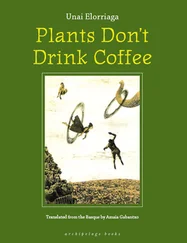Physiology of Salt Stress in Plants
Здесь есть возможность читать онлайн «Physiology of Salt Stress in Plants» — ознакомительный отрывок электронной книги совершенно бесплатно, а после прочтения отрывка купить полную версию. В некоторых случаях можно слушать аудио, скачать через торрент в формате fb2 и присутствует краткое содержание. Жанр: unrecognised, на английском языке. Описание произведения, (предисловие) а так же отзывы посетителей доступны на портале библиотеки ЛибКат.
- Название:Physiology of Salt Stress in Plants
- Автор:
- Жанр:
- Год:неизвестен
- ISBN:нет данных
- Рейтинг книги:4 / 5. Голосов: 1
-
Избранное:Добавить в избранное
- Отзывы:
-
Ваша оценка:
- 80
- 1
- 2
- 3
- 4
- 5
Physiology of Salt Stress in Plants: краткое содержание, описание и аннотация
Предлагаем к чтению аннотацию, описание, краткое содержание или предисловие (зависит от того, что написал сам автор книги «Physiology of Salt Stress in Plants»). Если вы не нашли необходимую информацию о книге — напишите в комментариях, мы постараемся отыскать её.
Discover how soil salinity affects plants and other organisms and the techniques used to remedy the issue Physiology of Salt Stress in Plants,
Physiology of Salt Stress in Plants
Physiology of Salt Stress in Plants
Physiology of Salt Stress in Plants — читать онлайн ознакомительный отрывок
Ниже представлен текст книги, разбитый по страницам. Система сохранения места последней прочитанной страницы, позволяет с удобством читать онлайн бесплатно книгу «Physiology of Salt Stress in Plants», без необходимости каждый раз заново искать на чём Вы остановились. Поставьте закладку, и сможете в любой момент перейти на страницу, на которой закончили чтение.
Интервал:
Закладка:
27 Glenn, E.P., O’Leary, J.W., Watson, M.C. et al. (1991). Salicornia bigelovii Torr.: an oilseed halophyte for seawater irrigation. Science 251: 1065–1067.
28 Glenn, E.P., Brown, J.J., and Blumwald, E. (1999). Salt tolerance and crop potential of halophytes. CRC Crit. Rev. Plant Sci. 18: 227–255.
29 Glenn, E.P., Mckeon, C., Gerhart, V. et al. (2009). Deficit irrigation of a landscape halophyte for reuse of saline waste water in a desert city. Landsc Urban Plan 89: 57–64.
30 Hamilton, E.W. and Heckathorn, S.A. (2001). Mitochondrial adaptations to NaCl. Complex I is protected by anti‐oxidants and small heat shock proteins, whereas complex II is protected by proline and betaine. Plant Physiol. 126: 1266–1274.
31 He, Y., Fu, J., Yu, C. et al. (2015). Increasing cyclic electron flow is related to Na+ sequestration into vacuoles for salt tolerance in soybean. J. Exp. Bot. 66: 6877–6889.
32 Hedrich, R. and Shabala, S. (2018). Stomata in a saline world. Curr. Opin. Plant Biol. 46: 87–95.
33 Hernández, J.A., Olmos, E., Corpas, F.J. et al. (1995). Salt‐induced oxidative stress in chloroplasts of pea plants. Plant Sci. 105: 151–167.
34 Hong, M., Li, N., Li, J. et al. (2019). Adenosine monophosphate‐activated protein kinase signaling regulates lipid metabolism in response to salinity stress in the red‐eared slider turtle Trachemys scripta elegans. Front. Physiol. 10: 1–11.
35 Ishikawa, T., Cuin, T.A., Bazihizina, N., and Shabala, S. (2018). Xylem ion loading and its implications for plant abiotic stress tolerance. Adv. Bot. Res. 87: 267–301.
36 Jacoby, R.P., Taylor, N.L., and Millar, A.H. (2011). The role of mitochondrial respiration in salinity tolerance. Trends Plant Sci. 16: 614–623.
37 Jajoo, A., Dube, A., and Bharti, S. (1994). Mg2+‐induced lipid phase transition in thylakoid membranes is reversed by anions. Biochem. Biophys. Res. Commun. 202: 1724–1730.
38 Jajoo, A., Bharti, S., and Kawamori, A. (2005). Interactions of chloride and formate at the donor and the acceptor side of photosystem II. J. Bioenerg. Biomembr. 37: 49–54.
39 Jeschke, W.D., Wolf, O., and Hartung, W. (1992). Effect of NaCI salinity on flows and partitioning of C, N, and mineral ions in whole plants of white lupin, Lupinus albus L. J. Exp. Bot. 43: 777–788.
40 Jha, A., Joshi, M., Yadav, N.S. et al. (2011). Cloning and characterization of the Salicornia brachiata Na+/H+ antiporter gene SbNHX1 and its expression by abiotic stress. Mol. Biol. Rep. 38: 1965–1973.
41 Jordan, F.L., Yoklic, M., Morino, K. et al. (2009). Consumptive water use and stomatal conductance of Atriplex lentiformis irrigated with industrial brine in a desert irrigation district. Agric. For. Meteorol. 149: 899–912.
42 Kant, S., Kant, P., Raveh, E., and Barak, S. (2006). Evidence that differential gene expression between the halophyte, Thellungiella halophila, and Arabidopsis thaliana is responsible for higher levels of the compatible osmolyteproline and tight control of Na+ uptake in T. halophila. Plant Cell Environ. 29: 1220–1234.
43 Kazachkova, Y., Batushansky, A., Cisneros, A. et al. (2013). Growth platform‐dependent and ‐independent phenotypic and metabolic responses of Arabidopsis and its halophytic relative, Eutrema salsugineum, to salt stress. Plant Physiol. 162: 1583–1598.
44 Kim, D.W., Rakwal, R., Agrawal, G.K. et al. (2005). A hydroponic rice seedling culture model system for investigating proteome of salt stress in rice leaf. Electrophoresis 26: 4521–4539.
45 Kinnersley, A.M. and Turano, F.J. (2010). Gamma Aminobutyric Acid (GABA) and plant responses to stress. CRC Crit. Rev. Plant Sci. 2689: 37–41.
46 Kirchhoff, H., Hall, C., Wood, M. et al. (2011). Dynamic control of protein diffusion within the granal thylakoid lumen. Proc. Natl. Acad. Sci. U. S. A. 108: 20248–20253.
47 Kosova, K., Prasil, I.T., and Vitamvas, P. (2013). Protein contribution to plant salinity response and tolerance acquisition. Int. J. Mol. Sci. 14: 6757–6789.
48 Kumari, N., Malik, K., Rani, B. et al. (2019). Insights in the physiological, biochemical and molecular basis of salt stress tolerance in plants. In: Microorganisms in Saline Environments: Strategies and Functions (eds. B. Giri and A. Verma), 353–374. Switzerland: Springer Nature.
49 Lambers, H., Chapin, F.S., and Pons, T.L. (2008). Respiration. In: Plant Physiological Ecology, 2e, 101–150. New York: Springer.
50 Mishra, A. and Tanna, B. (2017). Halophytes: potential resources for salt stress tolerance genes and promoters. Front. Plant Sci. 8: 1–10.
51 Mitsuya, S., El‐Shami, M., Sparkes, I.A. et al. (2010). Salt stress causes peroxisome proliferation, but inducing peroxisome proliferation does not improve NaCI tolerance in Arabidopsis thaliana. PLoS One 5: e9408.
52 Munns, R. and Tester, M. (2008). Mechanisms of salinity tolerance. Annu. Rev. Plant Biol. 59: 651–681.
53 Munns, R., Guo, J., Passioura, J.B., and Cramer, G.R. (2000). Leaf water status controls day‐time but not daily rates of leaf expansion in salt‐treated barley. Aust. J. Plant Physiol. 27: 949–957.
54 Munns, R., James, R.A., Xu, B. et al. (2012). Wheat grain yield on saline soils is improved by an ancestral Na+ transporter gene. Nat. Biotechnol. 30: 360–364.
55 Munns, R., Day, D.A., Fricke, W. et al. (2020). Energy costs of salt tolerance in crop plants. New Phytol. 225: 1072–1090.
56 Murata, N., Takahashi, S., Nishiyama, Y., and Allakhverdiev, S.I. (2007). Photoinhibition of photosystem II under environmental stress. Biochem.Biophys. Acta. ‐ Bioenerg. 1767: 414–421.
57 Ondrasek, G., Rengel, Z., and Veres, S. (2011). Soil salinisation and salt stress in crop production. In: Abiotic Stress in Plants ‐ Mechanisms and Adaptations (ed. A. Shanker), 171–190. Croatia: InTech.
58 Pagliano, C., La Rocca, N., Andreucci, F. et al. (2009). The extreme halophyte Salicornia veneta is depleted of the extrinsic PsbQ and PsbP proteins of the oxygen‐evolving complex without loss of functional activity. Ann. Bot. 103: 505–515.
59 Panta, S., Flowers, T., Lane, P. et al. (2014). Halophyte agriculture: success stories. Environ. Exp. Bot. 107: 71–83.
60 Panta, S., Flowers, T., Doyle, R. et al. (2016). Growth responses of Atriplex lentiformis and Medicago arborea in three soil types treated with saline water irrigation. Environ. Exp. Bot. 128: 39–50.
61 Pattanayak, G.K. and Tripathy, B.C. (2002). Catalytic function of a novel protein protochlorophyllide oxidoreductase C of Arabidopsis thaliana. Biochem. Biophys. Res. Commun. 291: 921–924.
62 Pavlovic, I., Mlinaric, S., Tarkowska, D. et al. (2019). Early Brassica crops responses to salinity stress: a comparative analysis between chinese cabbage, white cabbage, and kale. Front. Plant Sci. 10: 1–16.
63 Plaxton, W.C. (1996). The organization and regulation of plant glycolysis. Annu. Rev. Plant Physiol. Plant Mol. Biol. 47: 185–214.
64 Porcel, R., Aroca, R., and Ruiz‐Lozano, J.M. (2012). Salinity stress alleviation using arbuscular mycorrhizal fungi. A review. Agron. Sustain. Dev. 32: 181–200.
65 Qadir, M., Quillérou, E., Nangia, V. et al. (2014). Economics of salt‐induced land degradation and restoration. Nat. Resour. Forum 38: 282–295.
66 Qi, C.H., Chen, M., Song, J., and Wang, B.S. (2009). Increase in aquaporin activity is involved in leaf succulence of the euhalophyte Suaeda salsa, under salinity. Plant Sci. 176: 200–205.
67 Renault, H., Roussel, V., El Amrani, A. et al. (2010). The Arabidopsis pop2‐1 mutant reveals the involvement of GABA transaminase in salt stress tolerance. BMC Plant Biol. 10: 1–16.
68 Santos, C.V. (2004). Regulation of chlorophyll biosynthesis and degradation by salt stress in sunflower leaves. Sci. Hortic. (Amsterdam) 103: 93–99.
Читать дальшеИнтервал:
Закладка:
Похожие книги на «Physiology of Salt Stress in Plants»
Представляем Вашему вниманию похожие книги на «Physiology of Salt Stress in Plants» списком для выбора. Мы отобрали схожую по названию и смыслу литературу в надежде предоставить читателям больше вариантов отыскать новые, интересные, ещё непрочитанные произведения.
Обсуждение, отзывы о книге «Physiology of Salt Stress in Plants» и просто собственные мнения читателей. Оставьте ваши комментарии, напишите, что Вы думаете о произведении, его смысле или главных героях. Укажите что конкретно понравилось, а что нет, и почему Вы так считаете.












